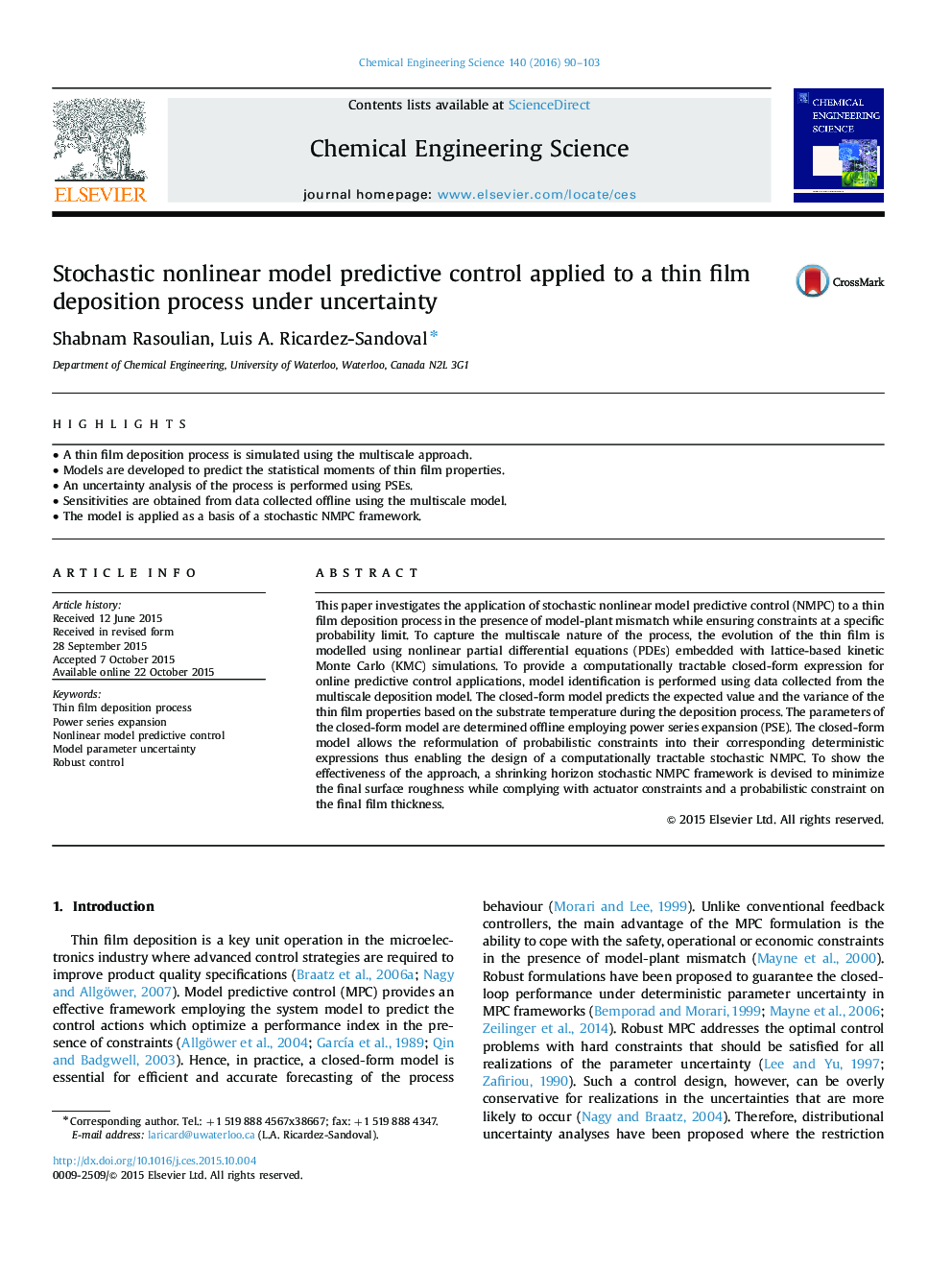| Article ID | Journal | Published Year | Pages | File Type |
|---|---|---|---|---|
| 154533 | Chemical Engineering Science | 2016 | 14 Pages |
•A thin film deposition process is simulated using the multiscale approach.•Models are developed to predict the statistical moments of thin film properties.•An uncertainty analysis of the process is performed using PSEs.•Sensitivities are obtained from data collected offline using the multiscale model.•The model is applied as a basis of a stochastic NMPC framework.
This paper investigates the application of stochastic nonlinear model predictive control (NMPC) to a thin film deposition process in the presence of model-plant mismatch while ensuring constraints at a specific probability limit. To capture the multiscale nature of the process, the evolution of the thin film is modelled using nonlinear partial differential equations (PDEs) embedded with lattice-based kinetic Monte Carlo (KMC) simulations. To provide a computationally tractable closed-form expression for online predictive control applications, model identification is performed using data collected from the multiscale deposition model. The closed-form model predicts the expected value and the variance of the thin film properties based on the substrate temperature during the deposition process. The parameters of the closed-form model are determined offline employing power series expansion (PSE). The closed-form model allows the reformulation of probabilistic constraints into their corresponding deterministic expressions thus enabling the design of a computationally tractable stochastic NMPC. To show the effectiveness of the approach, a shrinking horizon stochastic NMPC framework is devised to minimize the final surface roughness while complying with actuator constraints and a probabilistic constraint on the final film thickness.
